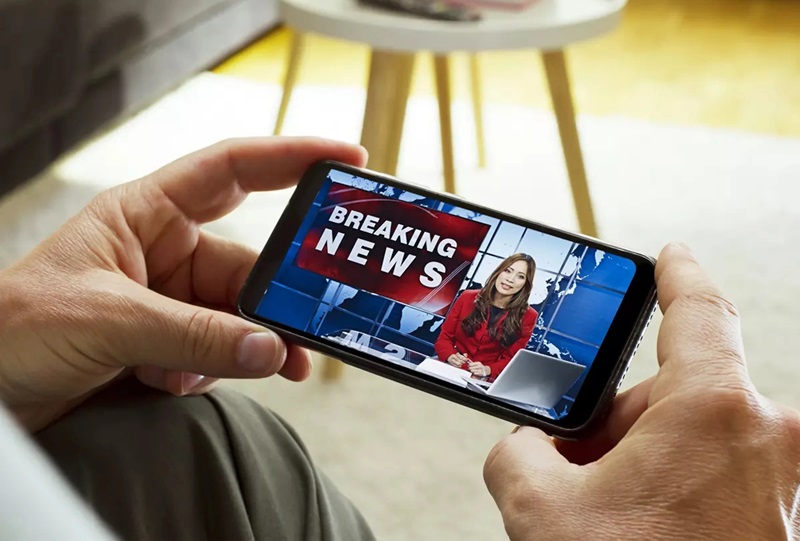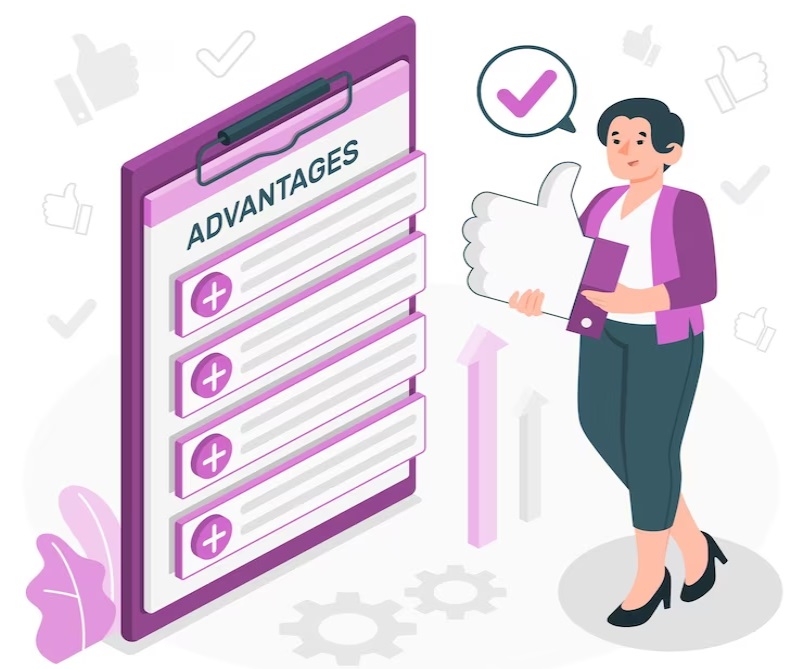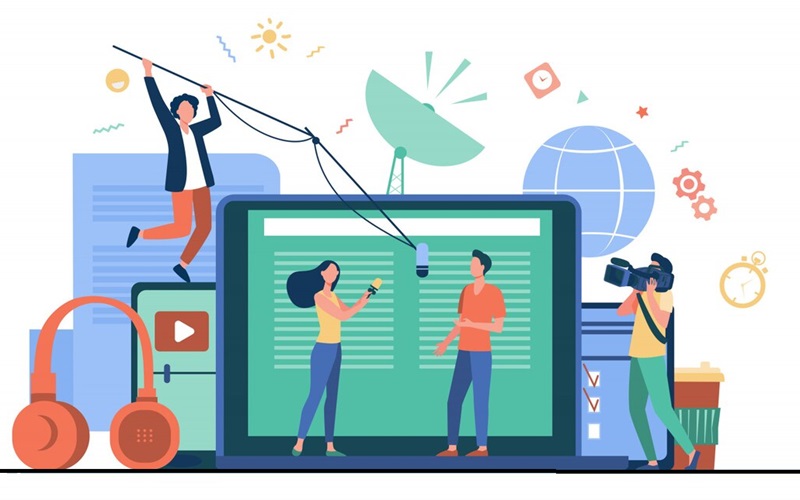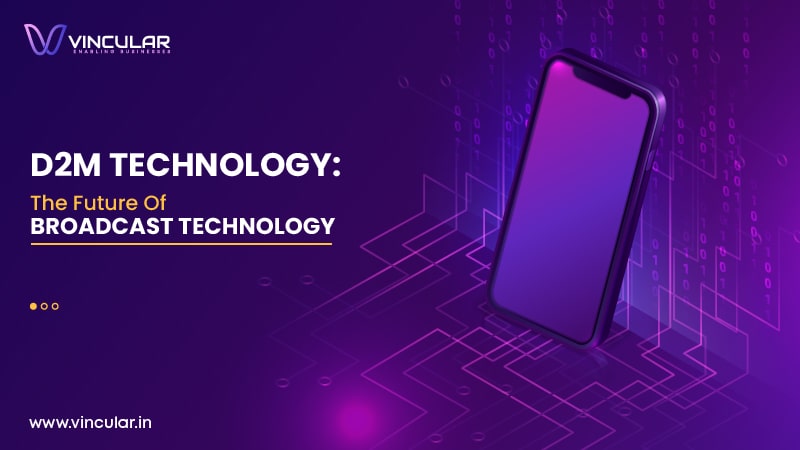D2M (Direct-to-Mobile) is a groundbreaking new technology which has the potential to revolutionise the way content is delivered.
This cutting-edge technology is aimed to provide live TV channels to smartphone users without requiring an internet connection.
In simple words, D2M broadcasting will let you consume the content directly over phones without any use of antenna dishes or not even the internet.
Interesting right? In this article, we will explore all the aspects of this latest direct-to-mobile broadcasting technology which can revolutionize the future of technology.
What is Direct-to-Mobile (D2M) Technology?

Direct-to-mobile (D2M) is a broadcasting technique that can provide multimedia information to users’ cell phones without needing an active internet connection.
It has traditionally been used to send out emergency notifications and support in disaster management. However, its adaptability goes beyond these typical applications.
Mechanism and Idea Behind D2M Broadcasting Technology
The idea behind D2M technology is quite similar to that of FM radio, where a receiver is built into a device which can receive radio frequencies.
DTH (Direct-to-Home) is another concept behind D2M technology, which uses a dish antenna to pick up satellite signals and send them to a TV receiver.
Through collaboration with India’s public service broadcaster Prasar Bharati, the Department of Telecommunications (DoT) is exploring the possibilities of developing a technology that allows video and other multimedia content to be delivered directly to mobile phones without the need for an active internet connection.
So, the Department of Telecom (DoT), the Ministry of Information & Broadcasting (MIB) and IIT-Kanpur are collaborating for this technology to expand its horizons to make the impossible happen.
Advantages of D2M Technology

Direct-to-mobile technology has many benefits. Let’s look at some of those benefits:
- Efficient and Reliable: D2M technology makes communication more effective and dependable, particularly when traditional network infrastructure may be unavailable or overburdened.
- Emergency Alerts and Disaster Management: During emergency scenarios or natural calamities, D2M can help deliver reliable alerts and authentic information without dependence on the internet or cellular networks.
- Reduced Network Congestion: D2M technology can reduce network congestion through the direct connection between devices, particularly in crowded spaces, at big events, or in heavily populated metropolitan areas. All users’ network performance may be improved as a result.
- Low Latency: Communication between D2M devices is often low-latency, so it is suitable for applications that need real-time communication, such as self-driving vehicles and industrial automation.
- Data-Free Streaming: With direct-to-mobile broadcasting, users can enjoy seamless streaming without having to worry about intent packages or data usage. With low latency and no buffering options, users can enjoy a smooth experience.
- Security and Privacy: D2M communication can improve security and privacy by limiting the exposure of data to potential interceptions or breaches that might occur when it flows via centralised network servers.
- Scalability: Considering D2M technology’s great scalability and ability to support a wide range of devices, it is appropriate for the linked device and application ecosystem that is constantly increasing.
Multi-Channel Broadcasting Benefits for Consumers, Telecom Operators, Broadcasters, and National Strategy

- Converged Direct-To-Mobile (D2M) network removes the need for costly and unstable mobile broadband networks by providing unlimited video and data content at a low set monthly rate.
- Regardless of the number of users consuming the material, our Next Generation convergent broadcast-broadband network improves instantaneous speeds and the user experience by providing consumers with content that is of the highest quality.
- The D2M network’s ability to converge with conventional mobile networks benefits telecom operators by giving mobile operators access to an additional data stream and maybe assisting in clearing the network of bandwidth-intensive applications like video and OTT.
- By providing a variety of applications, including educational programming, emergency alert systems, Video on Demand, and FOTA, broadcasters can broaden their audience and make the most of the spectrum that is currently available. The network is quite expandable and can access far-flung areas of India.
- To ensure that Emergency Alerts are transmitted directly, reliably, and independently of cellular and internet networks, India’s National Interest will need to possess the strategic capability to communicate directly to millions of smart gadgets and smartphones.
- The focused delivery of disaster management audio material is direct and authentic. In the case of catastrophic satellite failures, it is possible to transmit public content with strategic or governmental relevance through terrestrial backup.
Challenges Involved in Launching D2M Technology
The Department of Transportation (DoT) is currently conducting a D2M feasibility study. The technology is in the early stages of development.
A major challenge for the government is bringing in different stakeholders, including telecommunications, to launch D2M technologies.
As a result, the government needs to create an appealing proposition for stakeholders or implement policy reforms to make the tech a success.
In addition, to launch the technology on a large scale, the government will have to overcome infrastructure challenges, as making technology accessible to every corner of the country will be challenging.
So, do you think D2M technology could revolutionize the broadcasting and telecom industries in India?
Or do you think collaboration between different stakeholders is important for the successful implementation of D2M technology on a national scale?
Conclusion
D2M technology is a useful addition to the changing broadcast and mobile communication landscape because it offers a viable path for strengthening communication, lowering network congestion, boosting reliability, and supporting developing technologies in a variety of fields.
Using PB’s (Public Broadcasting Service) current High Power High Tower infrastructure and deployed in conjunction with Low Tower Broadcast Radio Heads, a larger experiment may be commissioned in Delhi with the involvement of numerous stakeholders.
The goal of the pilot is to show all parties involved how the D2M Free to-Air Broadcast Service Platform may function to carry out its public/national mandate while remaining independently funded.
For latest news and notification subscribe to our WhatsApp Channel or check out our Publication space.




